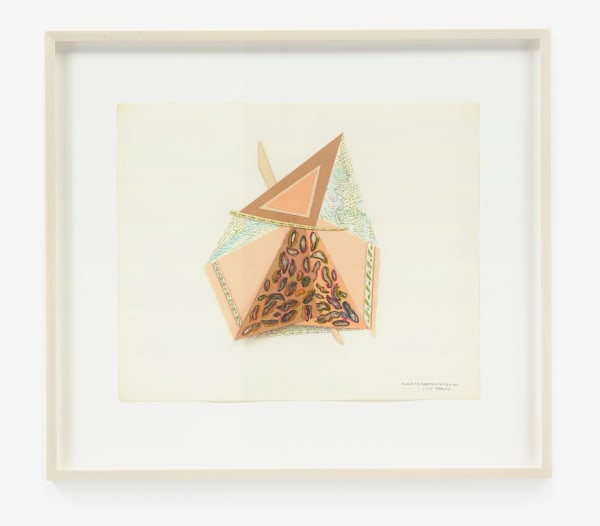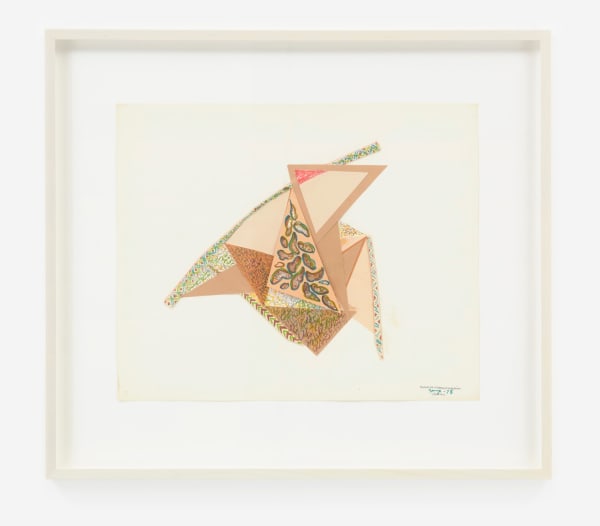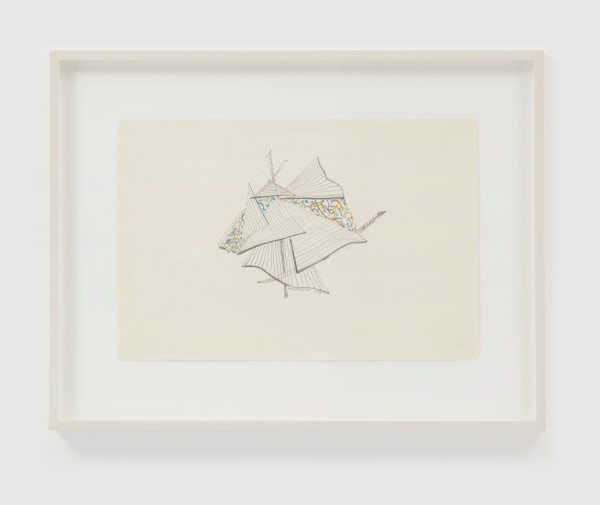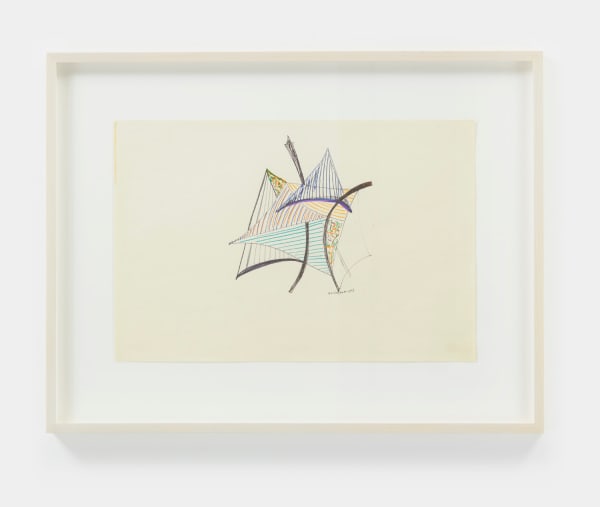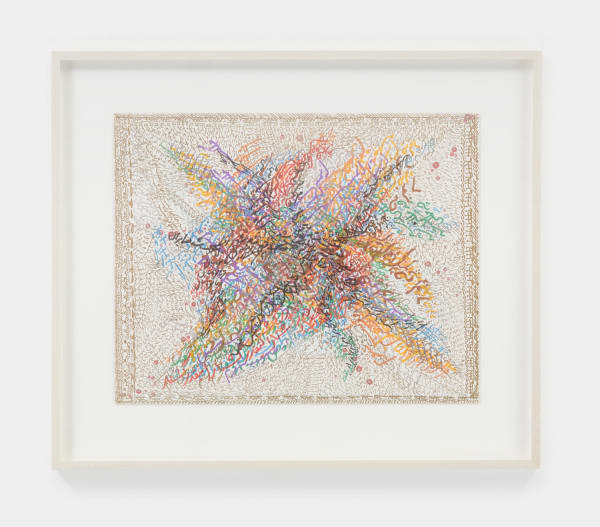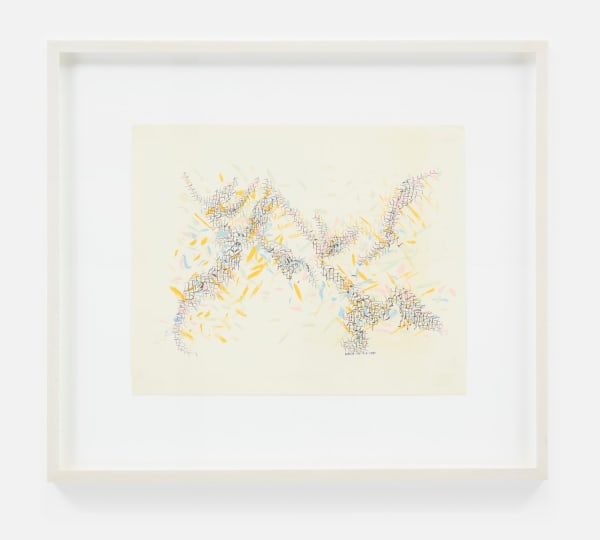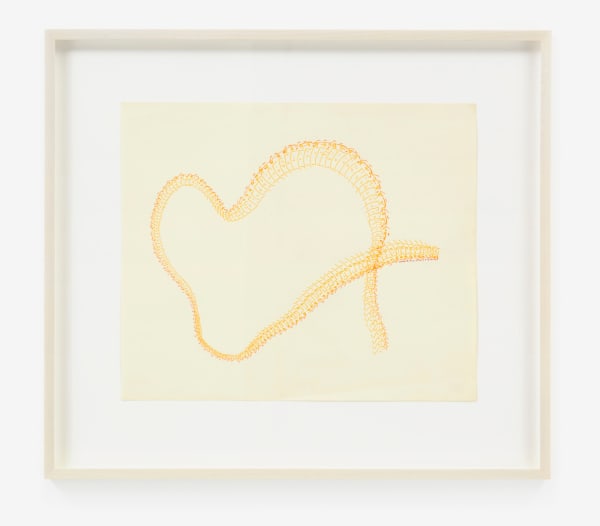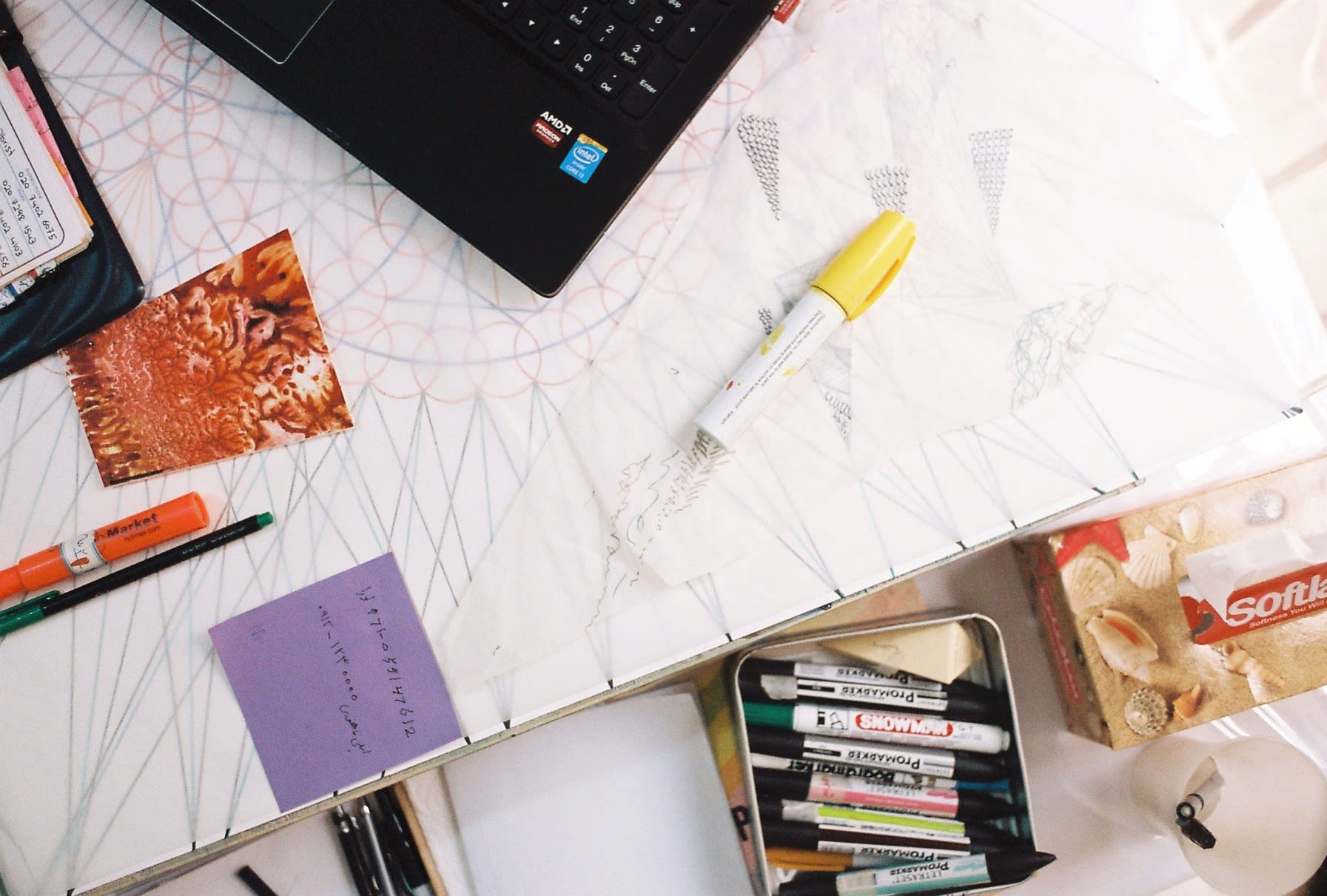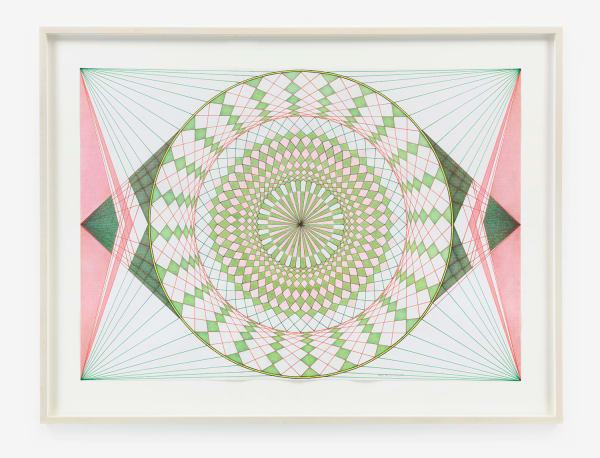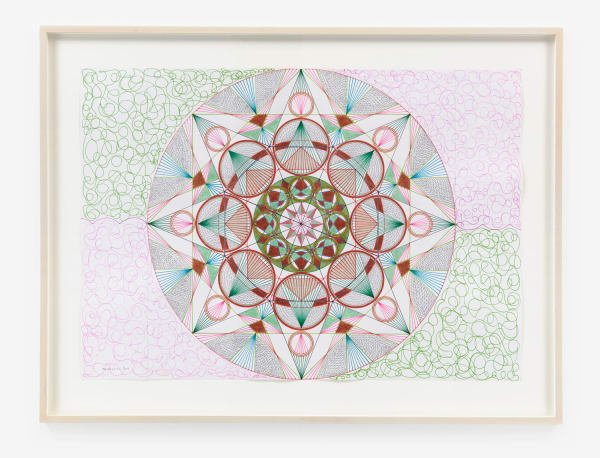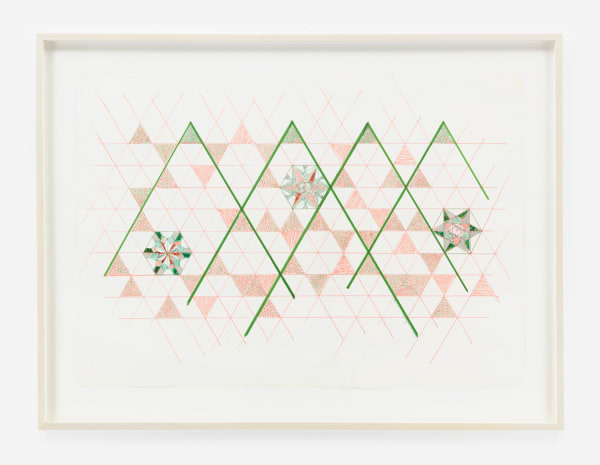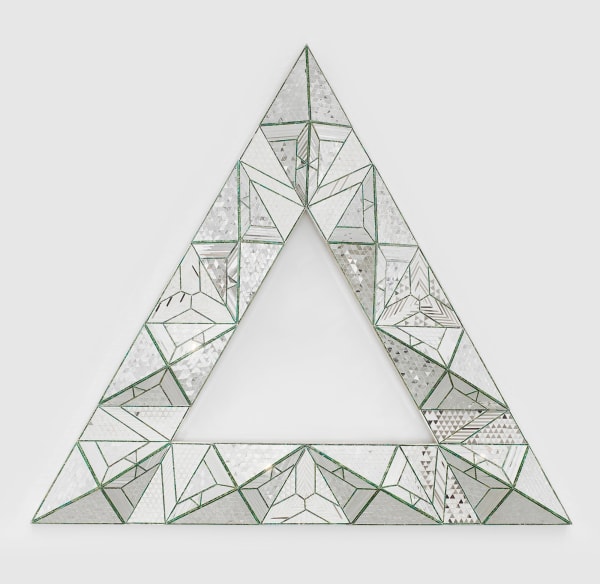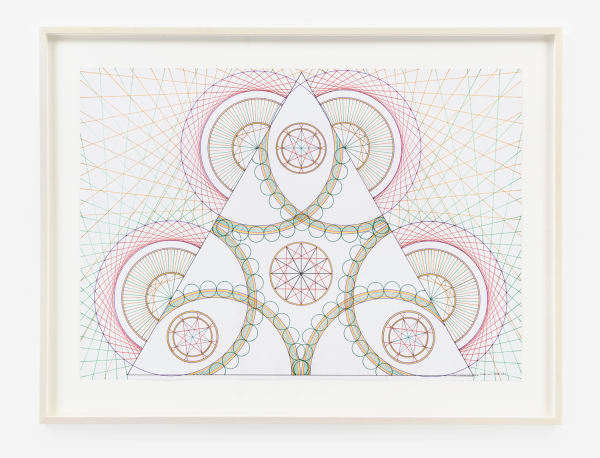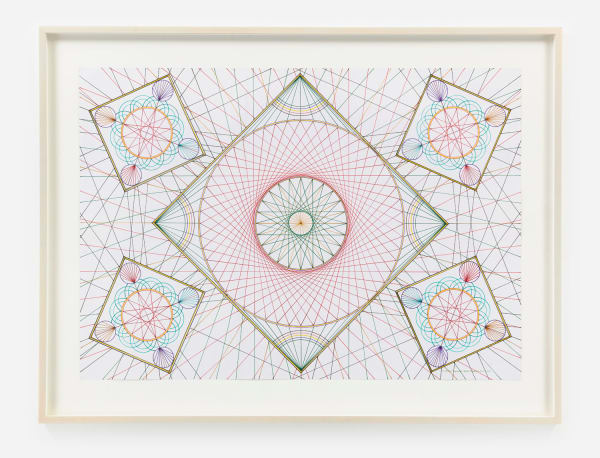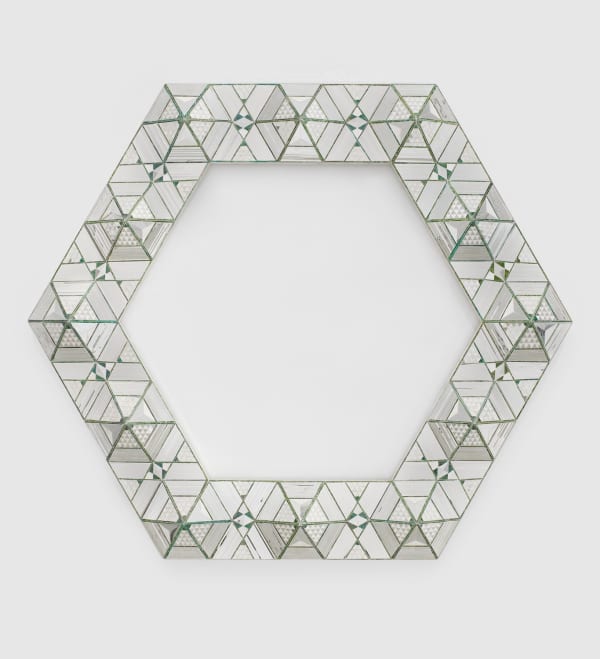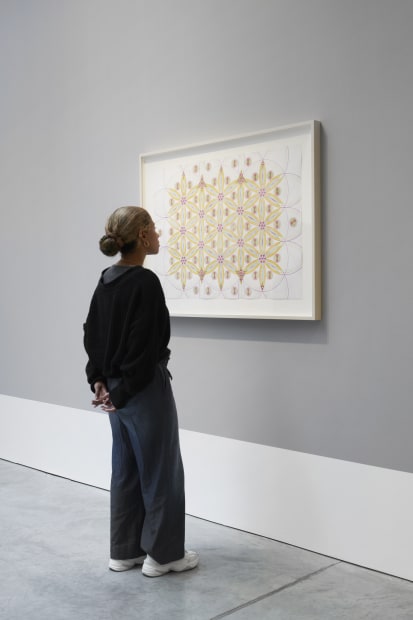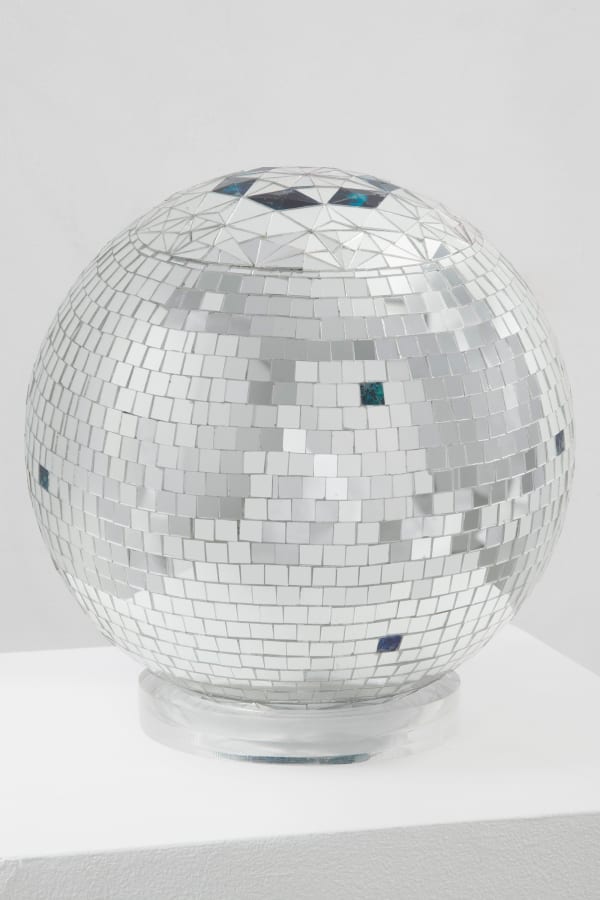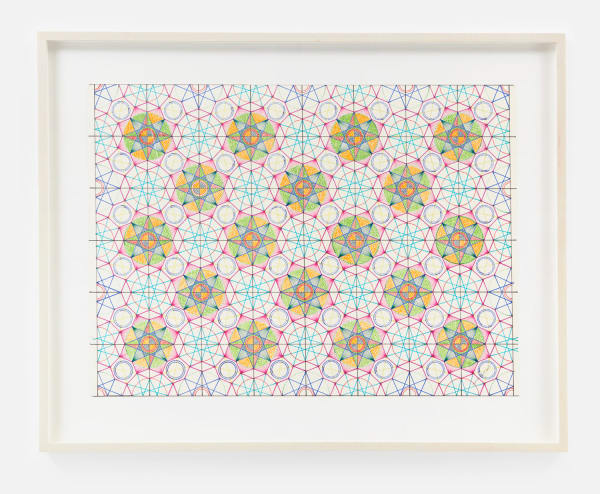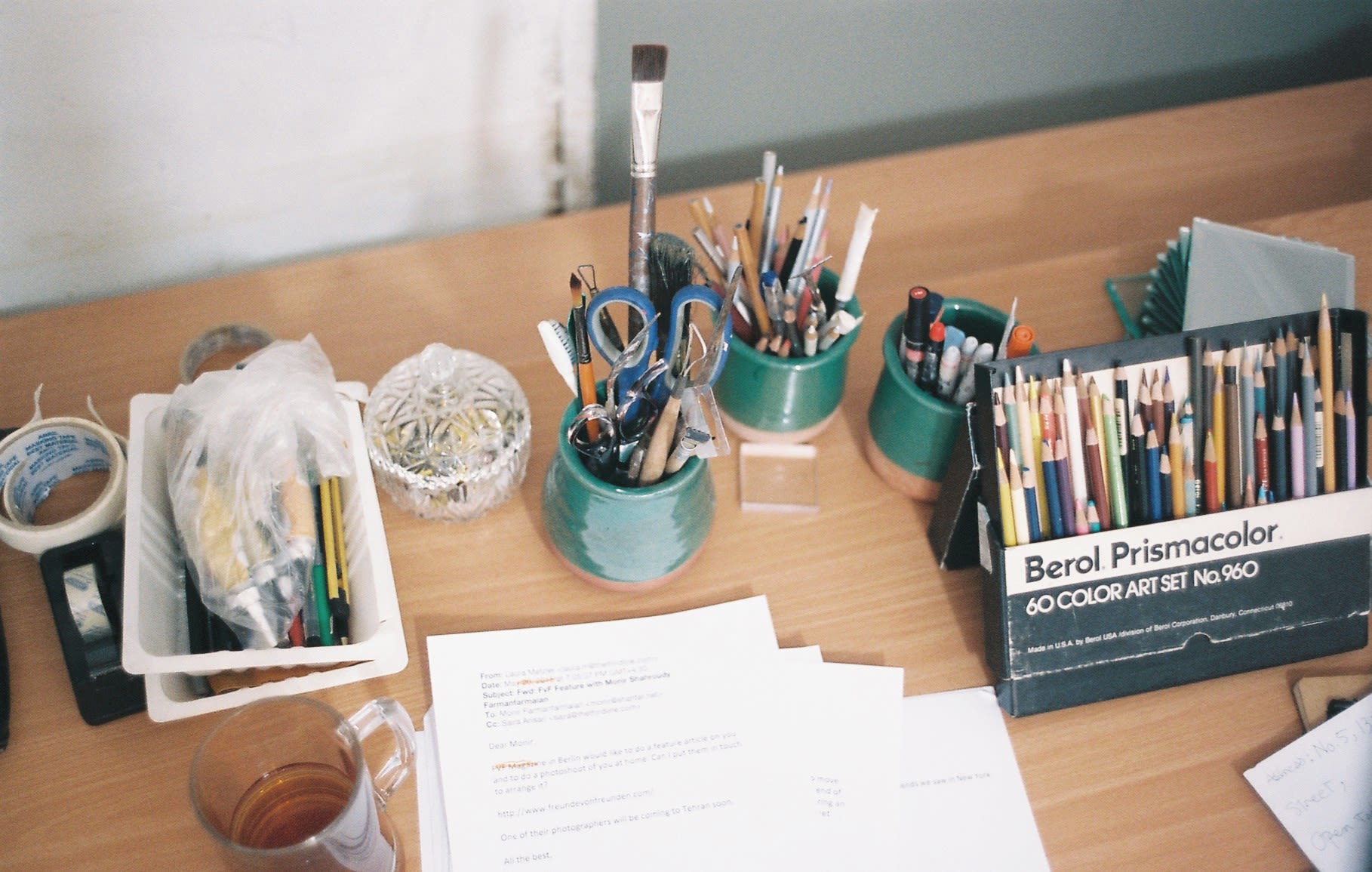-
-
Over a career spanning six decades, the Iranian artist Monir Shahroudy Farmanfarmaian (1922 - 2019) looked to geometric forms and her Persian heritage as the basis for a rigorously structured and endlessly inventive exploration of the possibilities of line and space. Monir is best known for her mirror mosaic sculptural works, in which cut polygonal fragments of reverse-painted, reflective glass are arranged into kaleidoscopic compositions grounded on principles of Islamic geometry. This exhibition, however, explores the ways in which drawing lies at the heart of Monir’s multivalent practice, bringing together never-before-seen expressive early works on paper with later geometric drawings.
The High Museum of Art in Atlanta, GA will host the first posthumous exhibition of works by Monir Shahroudy Farmanfarmaian at an American museum. Monir Farmanfarmaian: A Mirror Garden opens on November 18, 2022. -
-
The earliest works in this exhibition are drawings and mixed media works from the 1970s and 80s, which reveal Monir’s desire to experiment with forms beyond pure geometry and draw upon both the natural world and a wide array of Persian cultural influences.These works on paper include depictions of chadors–tents built by Persian nomads–and richly detailed calligraphies, inspired by the artist’s own collection of historic calligraphies.
-
Monir’s chadors are graphic distillations of these temporary architectural structures; hand-drawn, collaged, and recomposed versions of the Siyah Chador (black tent) pitched by tribes throughout Iran. These kinetic mixed media works suggest overlapping flaps of a tent blowing in a breeze on an expansive empty terrain.
-
-
Monir’s calligraphy drawings from the 1980s demonstrate her increasing confidence of line and color with bold and intricate strokes. The artist created these works while living in New York during a period of exile after the Iranian Revolution in 1978. Without access to her studio and the master craftsmen she worked with to build her mirror-mosaic works, Monir turned to drawing as a way to experiment artistically and connect with her home country from afar. Calligraphic script has a rich history in Persian culture and was originally developed to suitably transmit the beauty of the word of God in writing.
-
Monir employed the Persian Ta’liq cursive style in these drawings, unifying horizontal and vertical strokes that she wove together in a series of vibrantly colored calligraphies. These works emphasize free-flowing and spontaneous forms that spiral and radiate across the page yet reinforce a remarkable sense of overall compositional structure.
-
Monir returned to Tehran in 2004, where she dedicated the last two decades of her life to intensive bouts of creation. She worked out of her studio with craftsmen to produce dazzling mirror-mosaic sculptures, three of which are included in this exhibition. Alongside her sculptural practice, Monir steadily generated precise and brightly colored felt-tip-marker and colored-pencil line drawings, rendering rhythmic spatial planes composed of interlocking geometric patterns in varying configurations.
-

Studio View, Tehran, 2017. Photo by James Whineray
-

Installation view, Monir Shahroudy Farmanfarmaian, The Language of Symbols, 48 Walker Street, June 23 - August 5, 2022
-
-
In several drawings from this period, lines and swaths of color intersect to generate abstract floral patterning. By referencing organic forms, like the flower, these drawings highlight the relationship between geometry and the real as well as geometry and nature, cementing her belief that “everything is in geometry.”
-
Monir Shahroudy Farmanfarmaian often grouped her work into series she called “families,” suggesting a familial affinity of form, dimensionality or structure between works in each group. Fifth Family (2013–14) is a series of individual mirror-works, in which cut polygonal fragments of reverse-painted glass are arranged into kaleidoscopic compositions grounded on principles of Islamic geometry. Blending influences from Sufi architecture, Western minimalism, and classical Persian decoration, the series includes Fifth Family Triangle 2 (2013), the sacred fundamental form of the triangle, and progresses through the remaining seven regular polygons in Euclidean geometry. When the point is turned upwards, the triangle symbolizes a form active toward heaven and passive towards earth.
-
Monir’s experimentations in sculpture and drawing were influenced by her understanding of the expansive possibilities of line and form, utilizing principles of repetition and spatial progression in both mediums. In the sculptural work Fifth Family Hexagon, 2014, Monir generated a tessellation of shapes bound within the simple geometric shape of the hexagon, a foundational form she imbued with personal symbolic value. Extruding clusters of triangles, often delineated by green-painted mirror fragments, seem to leap from the snowy-white plaster that binds them.
-

-

-
These works on paper demonstrate the medium’s significance as a spiritual and meditative process and a means for the artist to exercise free-flowing spatial thinking, creating her own language of symbols on a singular plane.
-

Studio View, Tehran, 2017. Photo by James Whineray
-
LEARN MORE:
-
-

-
Her work is held in the permanent collections of major institutions worldwide, including the Alfond Collection of Contemporary Art, Cornell Fine Arts Museum, Rollins College, Winter Park, FL; The Andy Warhol Museum, Pittsburgh, PA; Grand Rapids Museum of Art, Grand Rapids, MI; Guggenheim Museum, Abu Dhabi, United Arab Emirates; High Museum of Art, Atlanta, GA; Hirshhorn Museum and Sculpture Garden, Washington, DC; Metropolitan Museum of Art, New York, NY; Monir Museum, Negarestan Museum Park Gardens, Tehran, Iran; Museum of Contemporary Art, Tokyo, Japan; Museum of Contemporary Art, Chicago, IL; Museum of Fine Arts, Boston, MA; Museum of Fine Arts, Houston, TX; Sharjah Art Foundation, Sharjah, United Arab Emirates; Solomon R. Guggenheim Museum, New York, NY; Tate Modern, London, United Kingdom; Tehran Museum of Contemporary Art, Tehran, Iran; Toledo Art Museum, Toledo, OH; Victoria and Albert Museum, London, United Kingdom, among others.
SOURCES:
Ardalan, Nader and Laleh Bakhtiar, The Sense of Unity : The Sufi Tradition in Persian Architecture Paperback, ABC International Group, Inc., 2000.
Cotter, Suzanne, Media Farzin and Shiva Balaghi (Eds.), Monir Shahroudy Farmanfarmaian: Infinite Possibility. Mirror Works And Drawings 1974-2014, Serralves, 2014.
O’Neill-Butler, Lauren, Let’s Have A Talk, Karma, New York, 2021.
Special thanks to the Estate of Monir Shahroudy Farmanfarmaian.
Photographs by Phoebe D’Heurle and Izzy Leung.
Monir Shahroudy Farmanfarmaian: The Language of Symbols : Gallery Exhibition at 48 Walker Street
Past viewing_room
